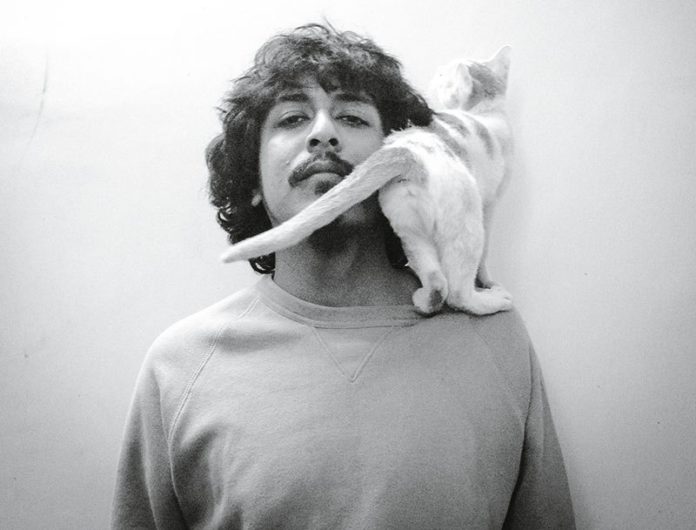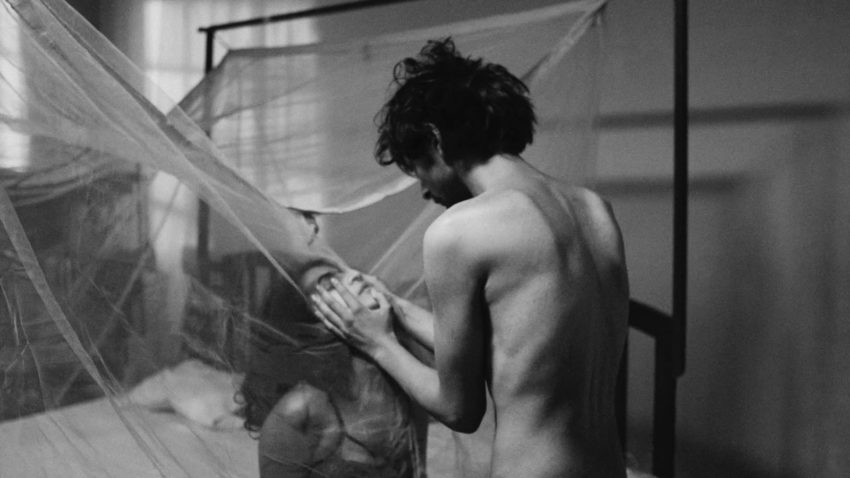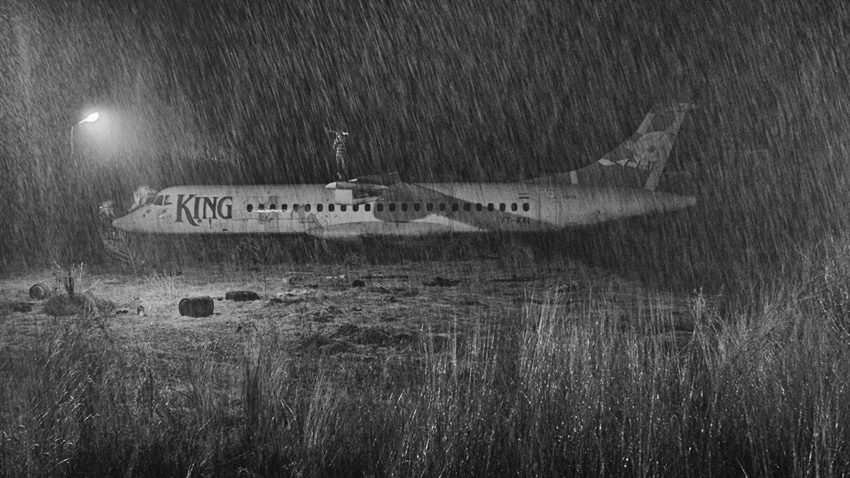19th Annual NEW YORK INDIAN FILM FESTIVAL
May 7-12, 2019
REVIEWS
|
asianmoviepulse.com
Interview with Ronny Sen: Innocence, the unadulterated, unconditional love for drugs, and its eventual predictable ends and consequences inspired the story.
6 May 2019
|

|
|
Ronny Sen was born in Silchar in Assam in a big joint family in 1986. By the time he was 2 or 3 years old, his father got transferred and they moved to Salt Lake City in Calcutta where he still lives and works. He was shooting photographs and some videos until his film debut, “Cat Sticks“. According to his words, “I was mostly perusing art you can say, which is still something I am more committed to.”
Cat Sticks is your feature debut. How it felt making it?
It felt like a great adventure. Also, because it is in a way biological and you feel it in the stomach. There was some apprehension in the beginning but slowly things kept falling into place. Filmmaking is solving problems on a daily basis while you are constantly on the move, travelling from one scene to the other or from one process to the next one while you are also thinking if everything seems right in the larger scheme of things, or if you are connecting the dots in the right way. But, in the end, you do feel everything that you generally otherwise feel in life. You feel sad, you feel happy, you feel jealous, you feel grateful, you feel loved, loathed, all of it.
It is about drug culture in Bengal. Where you affected by it? How?
David Levi Strauss wrote a piece A Threnody for Street Kids for Jim Goldberg’s photographic installation, which later became the famous book Raised by Wolves, 1995. In the essay, the first few lines of a paragraph read, ‘Like the angel of forgetfulness who touches us at birth to make us forget so that we can be born (becoming is a secret process), there is another angel, I suspect, who touches us when we become adults, causing us to forget the abyss of adolescence.’
For us, perhaps this angel was brown sugar, which made us forget the dark abyss of adolescence. “Cat Sticks” is the story of our lives. It’s the collective experience of an entire generation who grew up with drugs on the streets of Calcutta in the late 90s and early 2000s. Innocence, the unadulterated, unconditional love for drugs, and its eventual predictable ends and consequences inspired the story.
|

|
|
Your film was set in an unspecific time between the 90s and nowadays. Did you notice any kind of change on the drugs scene and in the terms of official response to the things happening on the scene?
There hasn’t been any change since the 90’s other than the fact that recovery is more available and possible today, even if the state machinery or orthodox clinical psychiatry has absolutely no role in this new development. This has been possible because of the presence of various autonomous self-help groups where members help each other to stay clean. Modern society has completely alienated and abandoned the drug addicts and the alcoholics. It is incapable to have a dialogue with them, and is constitutionally conditioned to look at addiction through the lens of bourgeois middle class morality or through the criminal justice system which are barbaric in some countries. There was a genocide in Philippines where thousands were massacred in the name of controlling addiction. You will get a death penalty if you have weed on you in Singapore while at the same time it is sold over the counter in Los Angeles. This difference is mind-boggling. While underrepresented communities are fighting the society in different parts of the world, the fight of drug addicts are going even further, because they are fighting science in a certain way. Understanding addiction is mostly through the monologue of psychiatry and it believes that it can be cured with medicine. Drug addicts do drugs because they love drugs. The desire to use is stronger than the desire to live so no pill in this world can lift this desire from an addict. A few days ago, in a landmark judgement in a US court, a pharmaceutical boss was convicted along with his colleagues who conspired to bribe doctors to prescribe addictive painkillers, often to patients who didn’t need them. So, we have a long way to go. There is no reason to believe that we have made much progress since medieval times as far as addiction is concerned.
Why did you choose the mosaic approach instead of telling one particular story?
This is about a collective experience and the atmosphere was more important, to build the space. I had a desire to show the various stages of an addict, not in a chronological, ethnographic way, but more in the way memory functions. To show some patterns. Dave Hickey in an interview said pattern is the mother of memory. Also, individual narratives with a character arc are realistic and I wasn’t interested in that. I didn’t want to portray anything or tell a story in a humanistic way, it’s the job of a journalist.
Why filming in black and white?
Black and white helps me to strip the layers of reality. The continuous rain at night almost becomes like a canvas or the foundation on which the story is to be built. The first job of the artist is to build the mood, everything else is secondary, for example in Indian classical music, there is something called an aalap. It is a melodic improvisation that sets the tone for a song or introduces a song. So, the black and white and the continuous rains become the foundation of my visual vocabulary. Many things that you gradually start seeing through these peculiar characters, slowly become believable. “Cat Sticks” couldn’t have happened in broad daylight in colour.
I was desperately looking for a Director of Photography who understood the language of black and white images very well and I was immensely fortunate to have found someone like Shreya Dev Dube, who is a phenomenal artist in her own right, and she became my eyes for “Cat Sticks”.
Was it especially hard to shoot particular scenes? The plane in the field? Or the poetic one with two naked guys searching for each other’s veins?
Some days were tough, some days were easy. The plane shot was tough because we had limited water and the space was huge, so production wise it was a challenge. Devika Dave, our production designer and her team did a great job with the plane. The interiors, the exterior, the lampposts, the grass outside, everything was designed. It’s not like we found a plane and we shot it. It was in the script and it took a lot of effort to put everything together. The one where two naked guys were searching for each other’s veins came from a real story. A friend of mine who used to do mainlining had narrated this incident to me that once he and his using partner were trying to find veins on each other while they were naked in a cemetery and it felt like a dance. This friend of mine was there while we were shooting this scene. Tanmay Dhanania who plays Byang choreographed it and Sounak Kundu who plays Potol did a great job in that sequence.
|

|
|
Were there any other significant challenges?
Sukanta Majumdar, the sound designer of “Cat Sticks” is probably the most experienced person who was on board with us. We had used a rain machine for the rains, which is throughout the film, and it was practically impossible to do a sync sound. So, we dubbed the whole film and Sukanta had to record and design everything which is there in the film. The sound design is impeccably detailed and restrained both at the same time. The soundscape of a rainy night in Calcutta, the sound in huge empty industrial spaces, in different parts of the city while the junkies occupy these spaces, it truly becomes a sonic portrait of the city and its underbelly at night. For me, it became a big learning experience. While putting the sound of a plane in one of the scenes on Sukanta’s machine, I hear a plane going far away and then sudden sound of bullets being fired and I ask him what are they? So he answered saying that these were recorded in Afghanistan and the sound is of the Taliban firing at night, so you can imagine how much fun we had through that long process of doing the sound design. In a recent interview given to Rock Street Journal the music composer of “Cat Sticks” mentioned, ‘Kolkata is a pretty noisy place and probably either a gift or a nightmare for a sound designer.‘ The sound design Sukanta did is almost a piece of music in its own right at points, such as the symphony of barking dogs just before the Needle Ballet, which totally startled me when I first heard it. For this film though, these very rich set-pieces of sound design and music alternate, each giving the other space. The constant rain acts as continuity and ensures that the film doesn’t feel fragmented from a sound point of view.
Can you give us some details about the casting process for the film?
We had auditions and then we did workshops for many months before hitting the floors. Some of the actors had to lose weight, leave homes and live separately. There was a scene where Byang (Tanmay Dhanania) steals from a shop, so one day during the workshop Byang (Tanmay Dhanania) and Potol (Sounak Kundu) went and stole from a real shop, I had no clue about it. They obviously went back within an hour and returned what they stole. But they were doing many things like spending the whole day in a very limited amount of money and so on. Joyraj Bhattacharjee who plays Tamanna Bhai in the film is an extremely committed theatre actor and political activist from Calcutta and along with Tanmay, he very generously worked with the actors during the workshops. We went to different rehabs and there was a long painful process for all the actors. But we were not doing scene rehearsals. As a photographer I have to believe in magic, in miracle, to be surprised by the unexpected and then react to it. We shot the film also like that. The actors were creating moments that we were not anticipating but we were prepared for. I had to embrace everything with an open mind and let them breathe in their own spaces rather than checking technical banalities of performance or how they help the larger story or their own. It didn’t matter. If there was flesh, and blood and truth of life in the moment, I was happy to work with it.
Which filmmakers and movements served as the primary influences, domestic and foreign?
Among the living I like Pedro Costa. Among the dead there is an army of them.
|

|
|
“Cat Sticks” premiered at Slamdance. How was the response of the audience and the critics? What are the future plans regarding the festival tour?
Slamdance was amazing. All of us loved it! We made great friends and watched lovely films. We had fun! We played at IFFLA in Los Angeles and we will be playing NYIFF in New York next week, then we will be going to Mammoth Lakes in the end of May. We won the Honorable mention at Slamdance and the jury stated ‘”Cat Sticks” is unbelievably gorgeous and has some of the most incredible poetic moments of any movies we’ve ever seen. We hope it finds a vein in American culture!’
Your professional plans for the future as a filmmaker? Any new stories you want to tell?
I have a few things going on in my head. Let’s see! It’s too early to say anything about it.
|
| |
URL: https://asianmoviepulse.com/2019/05/interview-with-ronny-sen/
|
|
|
|

